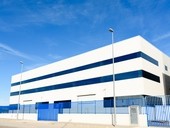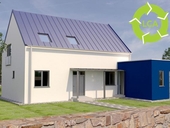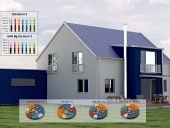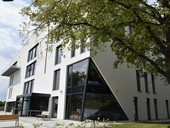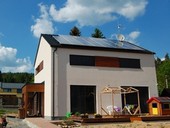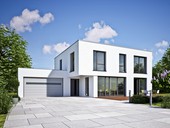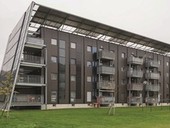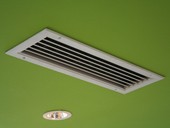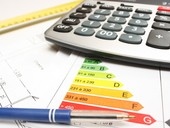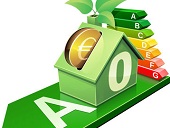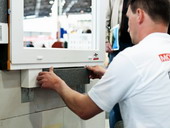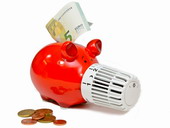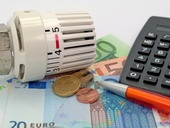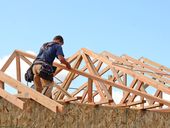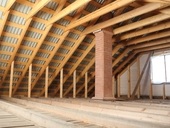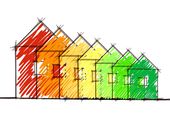Energy efficiency of industrial buildings in not very common topic. However, the quality of design must be based on valid national legislation and technical standards. Task to achieve best energy ratings is more and more frequently laid on building designer and energy specialist directly from investor – developer.
Archiv článků od 11.1.2016 do 10.4.2017
This two-part paper deals with the topic of environmental effectiveness of buildings. The goal of the paper is evaluation of expected embodied environmental impacts related with a detached family house. First part of the paper describes the evaluated building and used methods. Seven currently common variants of load-bearing structures (walls and floors) are described and compared. Five variants include masonry, while the sixth and seventh variant includes cast-in-place reinforced concrete structures. The evaluation follows Life-Cycle Assessment (LCA) methodology according to ČSN EN 15978 standard. The results of the evaluation are shown in the second part of the paper. Under the specified boundary conditions the variant with ceramic masonry filled with mineral wool has 5–14 % lower environmental impacts than other evaluated variants.
This two-part paper deals with the topic of environmental effectiveness of buildings. The goal of the paper is evaluation of expected embodied environmental impacts related with a detached family house. First part of the paper describes the evaluated building and used methods. Seven currently common variants of load-bearing structures (walls and floors) are described and compared. Five variants include masonry, while the sixth and seventh variant includes cast-in-place reinforced concrete structures. The evaluation follows Life-Cycle Assessment (LCA) methodology according to ČSN EN 15978 standard. The results of the evaluation are shown in the second part of the paper. Under the specified boundary conditions the variant with ceramic masonry filled with mineral wool has 5–14 % lower environmental impacts than other evaluated variants.
Nearly Zero Energy Buildings (NZEB) and the rest of energy efficient buildings needs to be precisely and complexly optimised during the planning stage. This helps to improve not only the energy demand and the energy costs but also overall efficiency of planning process, function, longer lifespan together with lower maintenance costs. It is crucial to start with optimisation at the very beginning of planning stage – first concepts or even when defining the client demands. These are also moments when at the lowest price we can make biggest impact on future efficiency of a building during the whole lifecycle. There are some tips like qualified client input, integral planning, architectural competition or quality assessment which can significantly improve overall quality of projects.
For more than a year, a nearly zero-energy standard has applied to certain buildings. In the Czech environment, specific technical parameters for such buildings have been known for three years. And for over six years, the Directive on energy performance of buildings has been in force, imposing the obligation upon EU member states to introduce this standard.
Nevertheless, it seems that for many experts, including those in the field of energy, this term is still quite unclear. Many imagine buildings coated with photovoltaic modules from the ground to the roof, buildings which are better than passive ones or buildings which are self-sufficient, i.e. completely independent of public energy networks. Given the fact that the concept of a nearly zero energy building is very distant from such notions, and because this standard will soon become obligatory for all buildings, including small family houses, let's have a look at what a nearly zero-energy building really is.
For more than a year, a nearly zero-energy standard has applied to certain buildings. In the Czech environment, specific technical parameters for such buildings have been known for three years. And for over six years, the Directive on energy performance of buildings has been in force, imposing the obligation upon EU member states to introduce this standard.
Nevertheless, it seems that for many experts, including those in the field of energy, this term is still quite unclear. Many imagine buildings coated with photovoltaic modules from the ground to the roof, buildings which are better than passive ones or buildings which are self-sufficient, i.e. completely independent of public energy networks. Given the fact that the concept of a nearly zero energy building is very distant from such notions, and because this standard will soon become obligatory for all buildings, including small family houses, let's have a look at what a nearly zero-energy building really is.
The article describes the impact of the contemporary and future legislative requirements for new buildings in terms of their conception and utilization of renewable resources. Soon, the requirement of quality standard is going to be effective in the Czech Republic that is called building with nearly zero energy consumption. That quality standard is defined at national level by legal regulations based on the requirement of European standard. On examples of family house, residential house and administration building, the impact of the to-be-established requirements for building conception is being demonstrated from the construction as well as the technical systems' point of view. With the existing development trend maintained it can be expected that a building with nearly zero energy consumption will have, comparing to an existing building, a better quality building shell, technical systems working with high efficiency and potentially may but needn't be, partially supplied by renewable energy resources.
Energy-efficient buildings research is one chapter of General Programme for Research and Innovation Horizont 2020 (2014 - 2020) which helps reaching the aims of european energy policy. First part of the article deals with characteristics of private-public partnership called Energy-efficient buildings (PPP EeB) that was founded for this purpose during previous General programme (2007 - 2013) and sums up projects PPP EeB supported in both programmes so far. Second part of the article deals with Czech participation in this programmes and describes topics of nearest Programme Hotizont calls for the year 2017.
Energy-efficient buildings research is one chapter of General Programme for Research and Innovation Horizont 2020 (2014 - 2020) which helps reaching the aims of european energy policy. First part of the article deals with characteristics of private-public partnership called Energy-efficient buildings (PPP EeB) that was founded for this purpose during previous General programme (2007 - 2013) and sums up projects PPP EeB supported in both programmes so far. Second part of the article deals with Czech participation in this programmes and describes topics of nearest Programme Hotizont calls for the year 2017.
Article shows the examples of effective solution of construction details for passive and zero energy buildings, for which today's standards define recommendations of hygienic and energy requirements. On selected details the possibilities of minimising the thermal bridge influence are shown with taking into account of economical and practical feasability. Most of the construction details were precisely optimised for the most effective solution choice. For energy efficient buildings optimisation process is essential to get the best results.
At present, it is establishing the second edition of the standard ČSN 33 2000-7-753: Low-voltage electrical installations – Part 7-753: Requirements for special installations or locations – Heating cables and embedded heating systems, which already includes other requirements associated with this type of heating, generalized for any use.
At present, it is establishing the second edition of the standard ČSN 33 2000-7-753: Low-voltage electrical installations – Part 7-753: Requirements for special installations or locations – Heating cables and embedded heating systems, which already includes other requirements associated with this type of heating, generalized for any use.
Preface – Helping data (continuation): Compression design strength at an angle to the grain – Columns: buckling coefficients for solid timber and for homogeneous glued laminated timber – Stability of members: Beams subjected to bending without compression force – Tilting factors – Laterally loaded joints with dowel type fasteners.
Elaboration up the full report is a complex process which is necessary to define the cost optimum for individual member states.The general procedure for determining cost optimization consists of four basic steps under Delegated Regulation. 244/2012: Determination of the reference buildings, determination of measures for improving energy efficiency, calculation of primary energy and calculation of the total cost.
zpět na aktuální články
